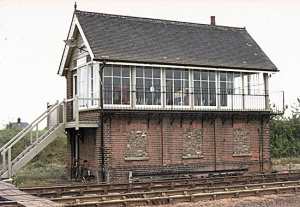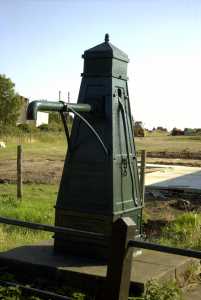Industrial and Agricultural Revolution
|
The two main effects of the industrial revolution on Eastern Essex was the mechanisation of transport and the provision of a transport infrastructure. AGRICULTURE Until the late 1700's agriculture was largely unchanged relying on labour intensive methods. Wealthy landowners such as Sir Henry Bate Dudley of Bradwell Hall led the way in investing in new machinery and techniques. Sir Henry published a paper to the Society of arts which led to the formation of Essex Agricultural Society in 1793. A Maldon Man called Pattison patented a road harrow which was taken into wide use throughout the Dengie 100. As with all new technologies things didn't always go well as was the case with the splendid new threshing machine purchased by Mr Wakefield of Burnham on Crouch. After just two days of use the threshing machine collapsed and defied the concerted efforts of three wheelwrights to repair the machine. Other farmers, such as George Attenborough of Steeple, and Andrew Chillingworth of Bradwell Hall , bought new threshing machines that proved much more reliable. Thomas Lloyd a miller from Hazeleigh and even coal merchants James Jackson of Bradwell and Payne & Murton of Southminster also invested in the new threshing machines that could be hired to small farmers. The changes in agricultural efficiency brought about an increase in mills that also underwent changes with the use of engines to help although many of the changes came towards the end of the industrial revolution. Examples of these changes included the vertical engine fitted to Hazeleigh mill in 1873, portable engines at Bradwell Mill in 1858,Woodham Mortimer Mill in 1878 and Southminster Mill in 1895. As technology moved further Tillingham Mill fitted a steam engine in 1900 and the new American method of revolving the lower rather than the upper stone were incorporated with use of an engine in mills at Marsh Road, Burnham on crouch and Leggatts, Tillingham.
The fertile land was suited to
smallholding and the production of salad vegetables and
fruit. In the late 1800's Thomas Smith had two 50 x 20
greenhouses growing tomatoes, cucumbers and lettuces.
Smith then developed new methods to grow salad
vegetables and tender crops such as melons which had up
to then been imported. Greenhouses at Southminster
followed suit by installing Coopers invincible water
heating apparatus to produce crops earlier than normal. RAILWAY
Click here for details of the coming of the Crouch Valley Railway Line. HIGHWAYS Until the industrial revolution little had changed in the highways since the departure of the Romans. Each parish was responsible to maintain the roads within their boundary under the supervision of an elected highway supervisor. The effect was that parishes did little more than filling in ruts and cleaning roadside ditches. In the late 1600's and early 1700's some improvement was made to major routes by raising funds from the main roads that became known as turnpikes. None of these roads came into the Dengie although several passed its perimeter including the junction at nearby Rettenden still called Rettenden Turnpike. By the later 1700's many roads started to show some improvement and milestones started to appear. One of the keenest supporters of milestones in the country was the Rector of Bradwell Rev Bate Dudley who was also a wealthy land owner. Bate Dudley was able to levy fines on parishes between Bradwell and Maldon if they failed to keep the roads up to his standards. By 1795 the roads from Maldon to Burnham on Crouch and Bradwell on sea were this well maintained and had milestones at regular intervals. WATER AND SEWAGE Until the Public Health ( Water) Act 1878 it was the responsibility of each parish to provide water for its residents. This was achieved in most cased by the means of a village pump. Early pumps had a wooden frame such as those at Tillingham and Bradwell on Sea. Later pumps were made from cast iron as is the case with the Southminster pump which was built in 1832 by Richmons and Sons, Chelmsford. The pump is still to be seen as the photograph below demonstrates.
Steeple's water pump was unusual in that although made from cast iron it had a wheel to pull the water rather than the usual handle. Sewage was also a problem of increased industry and population growth. In the 1880's Maldon Rural District Council had to deal with cases of London sewage dumped on Burnham Quay and at St Lawrence Stone whilst the fear of sewage pollution to the oyster layings led to court injunctions. MALTINGS AND OTHER INDUSTRIES Increased building led to a demand for bricks and thus local brickyards sprang up at Latchingdon and green lane, Burnham on Crouch. A large brickworks was built on Bridgemarsh island at Althorne. The brickworks constructed a tramway to take the bricks to a private quay on the River Crouch where the bricks were collected by Thames barges. Despite the floods which washed most of Bridgemarsh Island away traces of the brickyards can still be seen at low tide. Maltings were an important local feature to prepare barley for use in brewing. The barley was first soaked in water and then removed to dry out on the malting floor. A master maltster could just the exact time for the barley to soak and then the time for it to dry. The different beers requiring different features in the prepared barley. The major malting in the Dengie area was at Southminster to the north of Hall Road until it was demolished in 1972 to make way for an industrial estate Southminster Maltings were built in about 1845 as a large three storey building. Design was advanced with one conical kiln surrounded by four pyramidical kilns to give improved control over the drying process. Click here for more information on the Maltings |



